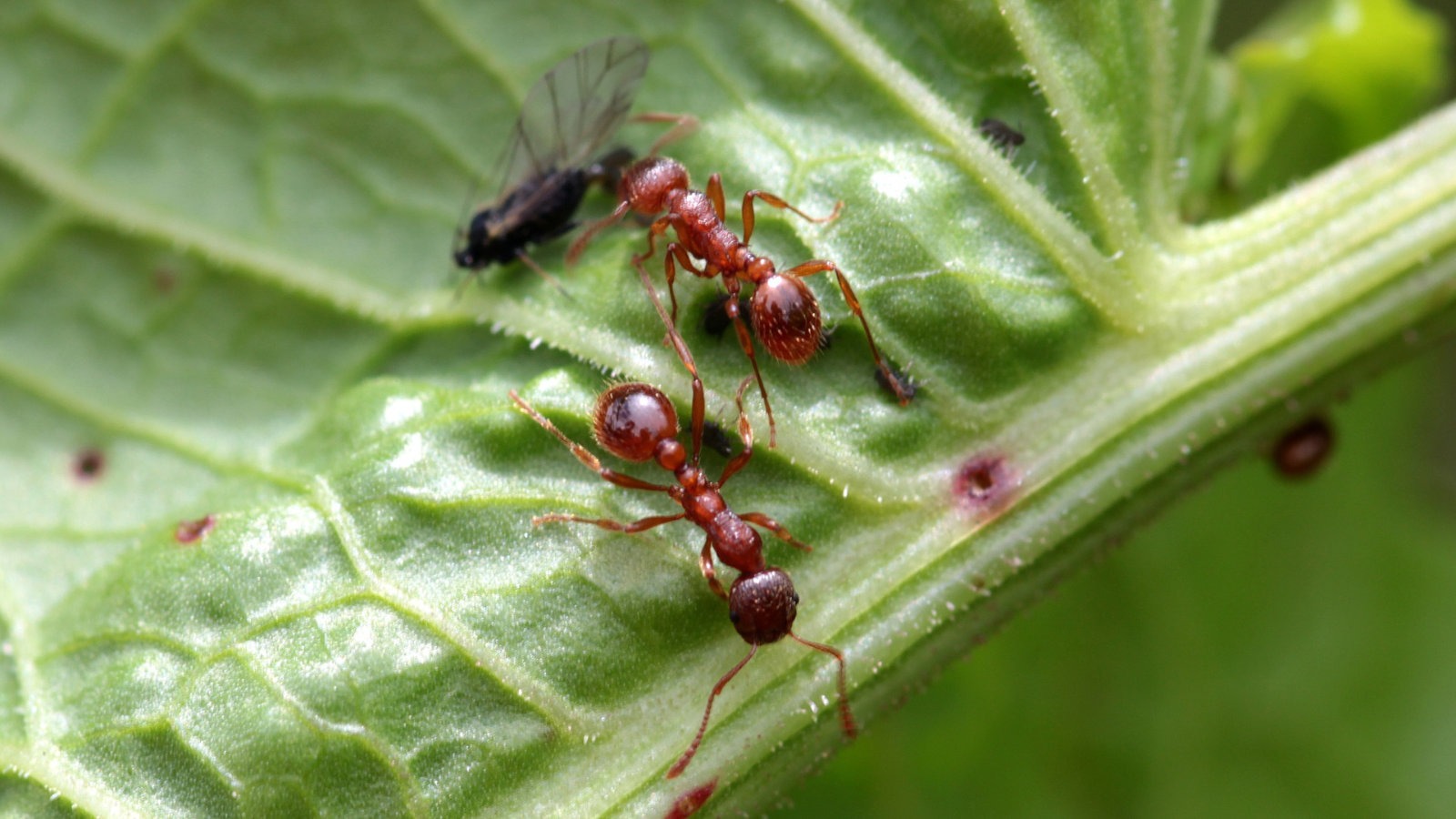Despite the name, these little ants are more light brown than red. Their waists have two segments with rounded humps. The species Myrmica ruginodis is very similar but can be distinguished by its more angular waist segments and the gentle curve at the base of its antennae. This species is also less common with larger colonies usually made in sheltered woodland sites.
Like the black garden ant, workers are usually around 4-5mms but the Queens and males are about twice the length.
Latin name: Myrmica rubra
Overview
Red ants make small colonies of around a hundred individuals usually under rocks, logs or in rotting tree stumps. This allows each colony to be very mobile, sometimes moving around throughout the summer. Their colonies are polygyne, with many queens and polydomous, with many individual nest sites which are defended tenaciously by all colony members. They can be aggressive little insects and have a vicious sting so try not to disturb them if they decide to make your garden their home.
Like other garden dwelling ants, males and young queens boom in July and August when they take to the air to mate. This provides a flying feast for birds such as Green Woodpeckers, Starlings and Swifts. After mating, males die off while the queens clip their wings and join together in dormant groups over winter before starting new colonies the next year. Amazingly, each queen can live up to fifteen years!
In the garden
Provided that you don’t get on the wrong side of them, they are a delight to have in your garden. Their aggressive nature means that they will deal with many other garden insects and keep pest species down to a minimum. Sufficient habitat such as rotting wood will draw them to your garden.
In Europe, several butterfly species, particularly the Large Blue, rely on this little ant and similar species to rear their young. This striking butterfly went extinct in the UK some time ago but efforts to reintroduce it have led to it becoming established in South West England again. After they’ve had their fill of leaves, the butterfly larvae lie on the ground and emit chemicals that mimic those of the ant’s larvae. Soon enough, unsuspecting worker ants will pick them up and take them back to the colony where they feed and nurture them. Eventually, the adult emerges and the ants immediately attack it but they rarely get hold of anything as the butterfly rushes to escape as it is covered in loose scales to protect its escape.
